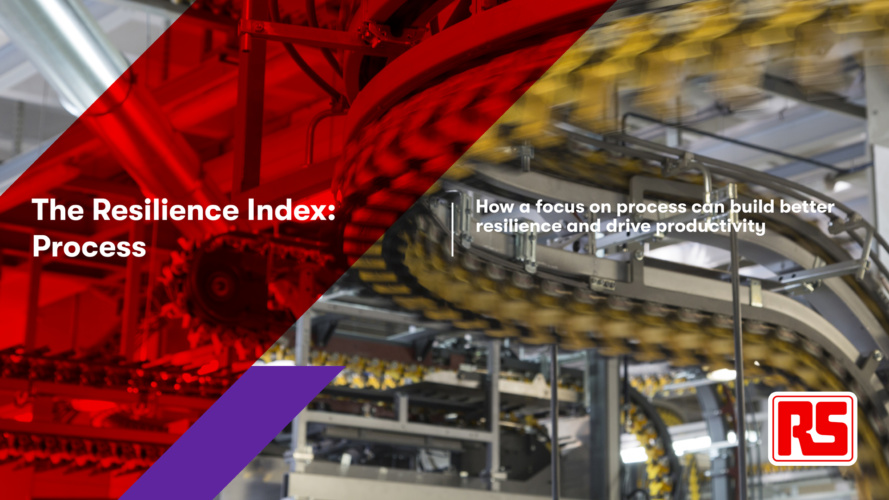New research reveals four key actions to strengthen process resilience
Independent research commissioned by RS Components (RS), has uncovered four key actions that senior engineers should consider taking to build process resilience across their organisations.
The findings are presented in the second report in the company's Resilience Index series:The Resilience Index: Process - How a focus on process can build better resilience and drive productivity.

According to the company the actions recommended by the report will help protect companies, push them to think and act differently, and establish a culture of continuous improvement.
The four actions are:
Continue to innovate. The UK is ranked third in the world and first in Europe for innovation (measured by patent registration 2000-2015). With a strong research and development heritage, it is vital UK manufacturers continue to invest in process improvements across all areas of their operation. Senior engineers should seek to build a network of peers and partners (such as RS Components) to help understand the opportunities and challenges offered by emerging technologies.
Keeping an open mind to new ways to solve problems is key. While tried and tested methods can be the best, in many cases new technologies can support solving the problems in a cheaper or faster way.
Register now to continue reading
Thanks for visiting The Engineer. You’ve now reached your monthly limit of news stories. Register for free to unlock unlimited access to all of our news coverage, as well as premium content including opinion, in-depth features and special reports.
Benefits of registering
-
In-depth insights and coverage of key emerging trends
-
Unrestricted access to special reports throughout the year
-
Daily technology news delivered straight to your inbox










Water Sector Talent Exodus Could Cripple The Sector
Well let´s do a little experiment. My last (10.4.25) half-yearly water/waste water bill from Severn Trent was £98.29. How much does not-for-profit Dŵr...